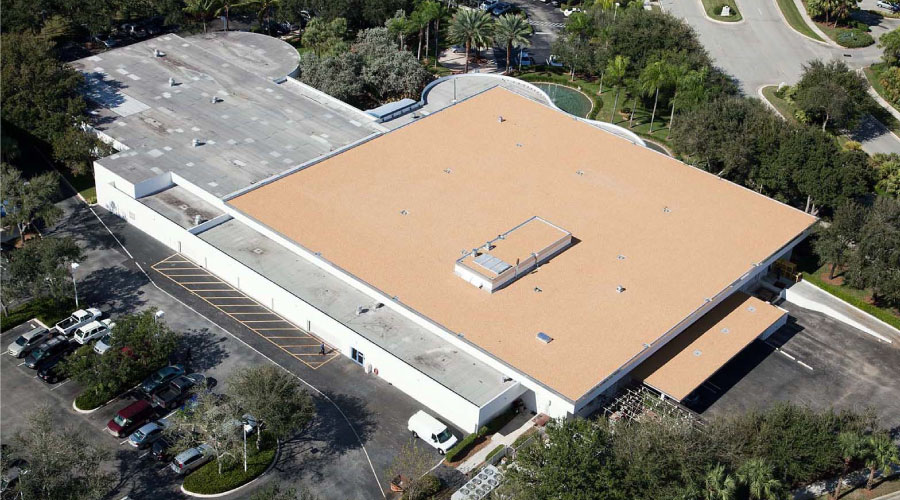Budget, Installation Weather Are Additional Issues with Roof Coatings
Part 3 of a 4-part article on key issues to consider with roof coatings, including the condition and type of roof and coating characteristics
Budget and weather conditions during installation are additional issues that should be taken into consideration when selecting roof coatings.
Because the coatings are usually considered maintenance items, “the cost can be deducted immediately instead of depreciating over time,” explains Daisey, who points out that facility managers should “always check with [their] accountant or tax preparer to verify this.” Another financial advantage, he says, is “they are often less expensive to install versus a tear-off or applying a membrane.”
And there should be a broader consideration as well: “Thinking environmentally, choosing a roof coating will extend the life of that existing roof, preventing or delaying the need to tear off that roof and put the waste materials into a landfill,” Daisey says. “Less building products going to landfills, extending the life of the existing roof, waterproofing and/or improving the energy efficiency of that roof — these are always good reasons to choose a roof coating.”
But don’t skimp on the coating itself, as this actually could make the product more costly over time. Martucci points out that if a facility manager uses a cheap coating or one not appropriate for the roof, this could cause the coating “to delaminate due to either poor adhesion or ponding water.” When this happens, “you will need to spend additional time and money fixing the problem.” It is important to keep in mind that a coating “will be exposed to the elements, such as direct sunlight, rain, hail, snow and ice,” he says. “The roof may also be exposed to foot traffic and chemicals. Acrylic coatings are very popular in many situations due to their ease of use and cost-effectiveness. Solvent-based coatings, silicones, and urethanes cost more, but can provide more resistance to weathering, abrasion, and ponding water.”
Check the Weather
Lastly, take into account the time of year, says Martucci. “Most coatings are applied at 42 to 50 degrees (F) and rising, and there should be no rain in the forecast for 24 hours after each coat. For this reason, a coating may not be practical in the late fall to early spring in many parts of the country.”
Weather is an important consideration, agrees Daisey. “Coatings need to be applied under good weather conditions. If the conditions are good and the roof is in good condition or recently repaired properly, roof coatings are almost always a great choice.”
The bottom line, says Mellott, is that there are many situations during the life of a roofing system when a roof coating is appropriate. “A review of the investment and calculating the ROI is a helpful way to determine the financial benefit of coating a roof. Roofs can be coated early in their life to protect systems or late in their life to extend the service life of the system. Roof coatings are nearly always a good investment.”
Related Topics:














